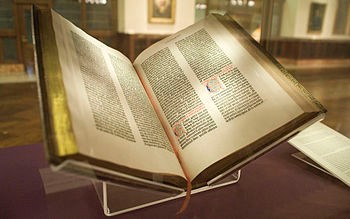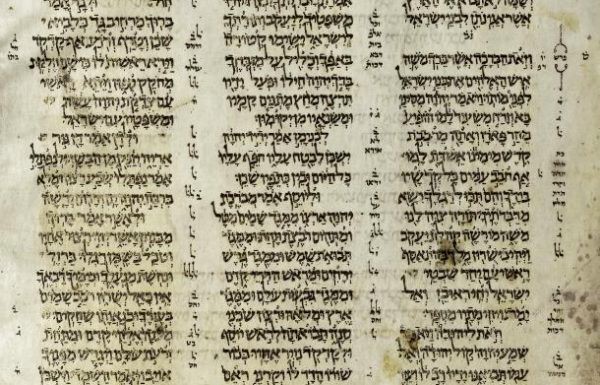Overview
Only few can read the Hebrew Bible in its original languages, Hebrew and Aramaic; most need to rely on translations. The language used in the Hebrew Bible (Bible or Tanach – תנ״ך) is different somewhat from the Hebrew spoken today. Even I, a native Hebrew speaker, need to use translations when it comes to Aramaic. Translations help understanding the unique words that appear in the Bible only once. Presently, the Bible (in whole, or in part) has been translated into 636 languages. Few languages have many different translations: there are more than 80 different English translations made since 1900. In fact, there is a quite controversial translation of the Bible into modern Hebrew.
Bible translations present many issues, mainly due to the unique grammatical, root based, nature of the Hebrew language. Other may stem from the translators themselves and their religious beliefs. After all, every translation is also a form of interpretation. Then, there is also the question about the source that is being translated: is it The Real original text?
This article is an “Executive Summary” of a paper on the subject, that I wrote during my rabbinical studies. I will try to provide a general view of the evolution of some of the more important translations. I will also try to answer the fundamental question: what is the source that was being translated. For those who are interested in the details, the complete paper is attached at the foot of this webpage.
A Roadmap of Bible Translations

Unfortunately, The Real Source, the origin, that was used to translate early compositions (Aquila, Septuagint, Yonathan translations) is lost. Furthermore, the manuscripts of the older translations do not exist in full, presenting additional challenges to the researchers.
The Septuagint
The first translation is the Septuagint translation to Greek. It was first completed in the 3rd Century BCE, and was later developed into many versions, the Hexapala is one example. Only a few of them remained in various levels of wholeness, the Codex Vaticanus is probably the most complete one. Those versions that are available today were made by Christians, and probably would have a bias due to religious beliefs.

Aramaic Translations
Aquila was the pupil of Rabbi Akiva, and was very particular in his approach to the translation to appease his Teacher. His Greek translation was the main source of Onkelos in his Aramaic translation of the Torah. Onkelos translation was used by commentators (e.g. Rashi) and is still read by Orthodox Jews today.
The Vulgate
The Vulgate is the first translation of The Bible to Latin, completed towards the end of the 4th Century CE. St. Jerome (Hieronymus) translated the Tanach directly from Hebrew, probably relying on a written source that was available then. The Vulgate became the official, authorized version of the whole Bible (both Testaments) by the Catholic Church. It was the very first book ever printed – the Gutenberg Bible.

The Masoretic Text – MT
In parallel, the Jewish Sages were researching and compiling a Standard Version of the Bible, the Masoretic Text (MT). The final (until further notice…) version was canonized in the 10th Century CE, and included punctuation, vowels and cantillation tropes, both in Hebrew and Aramaic.
The MT was checked against recent archeological findings and other authentic sources, (e.g. Dead Sea Kumeran Scrols, the Cahiro Geniza, Ein Gedi Scrolls of Leviticus) and underwent a few minor modifications. The examination of the MT against the new findings continues to amaze with the accuracy of the original MT. For over a millennium, the MT is used as a reliable source for the Jewish Bible.
The Aleppo (in The Shrine of the Book) and the Leningrad Codexis are the oldest MT manuscripts that exist today.


English Translations
The very first complete translation of both Testaments was credited to John Wycliffe, towards the end of the 14th Century. He used the Vulgate as the source. The Church banned its use, just as it did to any other translations of Scriptures. Later, thanks to its accuracy, it was de-facto accepted and used.
The MT was used to generate the first complete English version of the Bible, the King James Bible. It was the source to many other translations that followed: the English Revised Version (that modernized the language) that was adopted to become the American Standard Version, and indirectly, together with direct reference to the MT, the Jewish Publication Society 1917 edition of the Bible (JPS 1917).
The predecessor of the JPS 1917 Bible was the translation done by Isaac Leeser (December 12, 1806 – February 1, 1868). Initially, in 1845, he translated and published a Hebrew-English edition of the Torah in five volumes. Later he concluded the translation of the rest of The Bible from the Masoretic Text. This publication, released in 1853, nicknamed “the Leeser Bible”, served the American Jewish community as The Bible’s definitive translation for half a century.
Misinterpretations Due to Translation
The very problem of a translation is how to reveal the hidden meaning and multilayered understanding of the Hebrew text. Theodor Gaster of Columbia University lamented that “with all its excellences and clarifications,” the translation somehow lacked “the magic of the Bible… the verbal tact, the economy of statement, the pregnancy of phrase, the ability to catch a scene in a sentence and a situation in a word.”
Let us examine one example: Genesis 18:1-4 talks about the visitors who told Avraham and Sarah to expect a child.
The LORD [HaShem] appeared to him [to Avraham] by the terebinths of Mamre; he was sitting at the entrance of the tent as the day grew hot.
Looking up, he saw three men standing near him. As soon as he saw them, he ran from the entrance of the tent to greet them and, bowing to the ground,
“My lords,” he told them, “If I have found favor with you, please don’t leave your servant.
Let a little water be brought; bathe your feet and recline under the tree.
וַיֵּרָ֤א אֵלָיו֙ יְהוָ֔ה בְּאֵלֹנֵ֖י מַמְרֵ֑א וְה֛וּא יֹשֵׁ֥ב פֶּֽתַח הָאֹ֖הֶל כְּחֹ֥ם הַיּֽוֹם׃
וַיִּשָּׂ֤א עֵינָיו֙ וַיַּ֔רְא וְהִנֵּה֙ שְׁלֹשָׁ֣ה אֲנָשִׁ֔ים נִצָּבִ֖ים עָלָ֑יו וַיַּ֗רְא וַיָּ֤רָץ לִקְרָאתָם֙ מִפֶּ֣תַח הָאֹ֔הֶל וַיִּשְׁתַּ֖חוּ אָֽרְצָה׃
וַיֹּאמַ֑ר אֲדֹנָ֗י אִם נָ֨א מָצָ֤אתִי חֵן֙ בְּעֵינֶ֔יךָ אַל נָ֥א תַעֲבֹ֖ר מֵעַ֥ל עַבְדֶּֽךָ׃
יֻקַּֽח נָ֣א מְעַט מַ֔יִם וְרַחֲצ֖וּ רַגְלֵיכֶ֑ם וְהִֽשָּׁעֲנ֖וּ תַּ֥חַת הָעֵֽץ׃
Verse 3 translation shown here (International Standard Version) correctly translates the word ADONAY (אֲדֹנָי) to the plural of my ADON (אֲדֹנִי) – my sir, my lord. It continues with the plural suggestion, supporting the interpretation and the subject matter: the three visitors are being addressed by Avraham.
Other translations – including the JPS 1917 – use the word lord (or Lord). In contrast to Hebrew, the English uses for second person single and plural the same words, “you” and “your”.
In Hebrew, verse 3 is, except for the word “ADONAY”, in second person single. Not plural. So whom does Avraham talk to? ADONAY – אֲדֹנָי – is GoD – The LORD. After all, verse 1 tells us that the LORD (this is the way it is translated in ALL English versions) visited Avraham. The switch between plural language in verse 2, to single in verse 3 and back to plural in verse 4 is astounding, enabling a mountain of interpretations at all levels: most of them are completely lost in all the English translations.
Powered By EmbedPress